Supplemental data to: TRANSPLANT INT.
Paul Perco(1)*, Peter Blaha(2)*, Alexander Kainz(1), Bernd Mayer(3), Peter Hauser(1)+, Thomas Wekerle(2), and Rainer Oberbauer(1)
1 – Department of Nephrology, Medical University of Vienna, Waehringer Guertel 18-20, 1090 Vienna, AUSTRIA
2 – Division of Transplantation, Department of Surgery, Medical University of Vienna, Waehringer Guertel 18-20, 1090 Vienna, AUSTRIA
3 – emergentec biodevelopment, Rathausstrasse 5/3, 1010 Vienna, AUSTRIA
+ – present address: Department of Nephrology, University of Washington, Seattle, WA, USA
* – Paul Perco and Peter Blaha are co-first authors of this paper
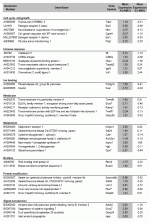
Representation of the 62 genes upregulated in the TOL group compared to the CTRL group. Genes are categorized based on GO Terms and PANTHER classifications and are ranked by difference of mean expression between the two groups studied.
View PDF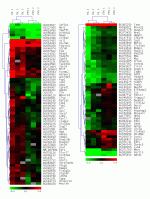
Expression profiles of differentially regulated genes between the TOL and the CTRL group. Euclidean distance was used as distance measure and complete linkage as the linkage rule. Red spots indicate abundantly expressed transcripts whereas green spots indicate low expressed transcripts in comparison to the reference RNA. A clear separation between the two groups is detected. GenBank accession numbers and Gene Symbols are used for labeling the cDNA clones. Genes upregulated in the TOL groups are depicted on the left whereas genes downregulated in the TOL group as compared to the CTRL group are shown on the right.
View JPG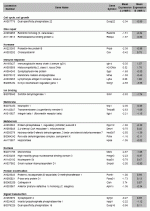
Representation of the 51 genes downregulated in the TOL group compared to the CTRL group. Genes are categorized based on GO Terms and PANTHER classifications and are ranked by difference of mean expression between the two groups studied.
View PDF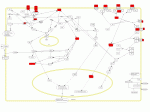
Inflammation mediated by chemokine and cytokine signaling pathway. Genes highly upregulated in the lymphocyte populations in our dataset are highlighted red.
View JPG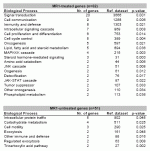
Biological processes statistically enriched with differentially expressed genes between the TOL and the CTRL group. The reference dataset consisted of all 23,520 genes with assigned biological processes. Categories are sorted in descending order by the total number of genes in each group.
View PDF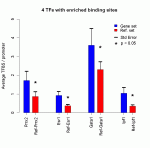
Transcription factors with enriched binding sites in the regulatory regions of the genes upregulated in the TOL group compared to the CTRL group. The reference dataset consisted of 200 randomly picked promoter sequences as provided by the CONFAC tool.
View JPG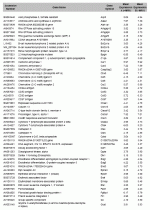
Genes (n=168) abundantly expressed (fold change > 3) in both groups compared to the mouse reference RNA. Genes are sorted in alphabetical order by Gene Symbol.
View PDF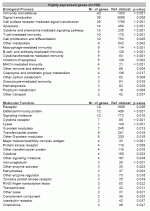
Biological processes and molecular functions with a statistically enriched set of abundantly expressed genes assigned to. The reference dataset consisted of all 23,520 genes with either an assigned biological process or molecular function respectively.
View PDF
Biological pathways the abundantly expressed genes are involved in as reported by the PANTHER classification system.
View PDFOriginal data according to the MIAME guidelines
View PDFArray experiment:
TOL 1 // A1_mmk023.jpg // A1_mmk023.zip
TOL 2 // A2_mmk020.jpg // A2_mmk020.zip
TOL 3 // A3_mmk033.jpg // A3_mmk033.zip
CTRL 1 // B1_mmk022.jpg // B1_mmk022.zip
CTRL 2 // B2_mmk021.jpg // B2_mmk021.zip
CTRL 3 // B3_mmk030.jpg // B3_mmk030.zip

